I have been on the hunt for some good woofers. In the range of 30-500 hz. I keep coming across something called "symmetrical drive".
Maybe someone can answer these questions:
The dampers in your car affect handling and comfort. You want more handling? You go stiffer, then you lose comfort. You want better comfort? You go softer, you lose handling. That is unless you have better technology like a digressive shock. Better comfort with basically no drawback in handling. The trade is higher cost. Is symmetrical drive this same concept?
As far as I can tell tell, there are only 3 companies that use symmetrical drive. This first is Scanspeak with their revelator and illuminator lines. The other two, allegedly, employ designers that left Scanspeak. SB acoustics with their Satori line and Wavecor with their higher end lineup of woofers.
The final question becomes: Is it worth it?
Lets compare two drivers:
This Wavecor has a regular drive and is $120

For $51 more you can get a symmetrical drive.

Clearly this isn't a one to one. But I am wondering how much more you get. Is it a huge difference? Or is it just a "nice to have"
Maybe someone can answer these questions:
- What exactly is it?
- How does it work?
- What is its benefit?
- What brands/lineups use it?
- Is it more advantageous in one octave over some others? Or is just just plain better?
The dampers in your car affect handling and comfort. You want more handling? You go stiffer, then you lose comfort. You want better comfort? You go softer, you lose handling. That is unless you have better technology like a digressive shock. Better comfort with basically no drawback in handling. The trade is higher cost. Is symmetrical drive this same concept?
As far as I can tell tell, there are only 3 companies that use symmetrical drive. This first is Scanspeak with their revelator and illuminator lines. The other two, allegedly, employ designers that left Scanspeak. SB acoustics with their Satori line and Wavecor with their higher end lineup of woofers.
The final question becomes: Is it worth it?
Lets compare two drivers:
This Wavecor has a regular drive and is $120
For $51 more you can get a symmetrical drive.
Clearly this isn't a one to one. But I am wondering how much more you get. Is it a huge difference? Or is it just a "nice to have"
The SD system is explained in this PDF: https://www.scan-speak.dk/datasheet/tech/Scan-Speak_Technote06_SD-System.pdf
For a wide band woofer it may be "worth it", but the difference is certainly not "huge".I have been on the hunt for some good woofers. In the range of 30-500 hz.
The final question becomes: Is it worth it?
Clearly this isn't a one to one. But I am wondering how much more you get. Is it a huge difference? Or is it just a "nice to have"
In automotive terms, more like comparing a V12 of the same displacement to a V6, rather than linear, progressive or digressive suspension dampers.
Various names have been used for "symmetrical drive", JBL called it "Differential drive", 18sound calls theirs "Tetracoil".
Some discussion here:
For the differential drive to "win", it should produce less distortion than single coil woofers, which it does not.JBL's differential drive wins. Its both coils are overhung and yet produces less distortion, please see Figure 8A on page 7 in attached technote. a) Can anyone tell why?
According to figure 7 on page 6, the 2268H driver has 10% third harmonic distortion at 33Hz at ~7.4mm excursion (estimated), and 10% second harmonic distortion at ~25Hz at ~7.3mm excursion.
The drivers impedance is over 20 ohms between 25 to 45Hz.
That distortion was at 23.7 volts...
Since the "symmetrical drive" costs considerably more for an equivalent (real) Xmax, a less expensive conventional driver with more Xmax could outperform it.
Shorting rings are effective at reducing distortion and modern drivers tend to have them. Symmetry isn't really the point, but rather consistency of coil inductance.
Even if it were the point, the concept of favouring symmetric distortions at the expense of asymmetric distortions is something we could share with amplifier design. If such information were available you'd want to consider whether the driver can maintain a monotonically decreasing set of harmonics consistently over a range of levels.
Even if it were the point, the concept of favouring symmetric distortions at the expense of asymmetric distortions is something we could share with amplifier design. If such information were available you'd want to consider whether the driver can maintain a monotonically decreasing set of harmonics consistently over a range of levels.
As far as I can tell tell, there are only 3 companies that use symmetrical drive. This first is Scanspeak with their revelator and illuminator lines. The other two, allegedly, employ designers that left Scanspeak. SB acoustics with their Satori line and Wavecor with their higher end lineup of woofers.
Attachments
-
Balanced_Drive_technical_paper.pdf2.3 MB · Views: 13
-
Scan-Speak_Technote06_SD-System.pdf227.2 KB · Views: 9
-
Assessing_Motor_Topologies.pdf1.5 MB · Views: 10
-
Klippel_Nonlinearity_Poster.pdf4.1 MB · Views: 9
-
JBL Technical Note - Vol.1, No.3A LF transducers.pdf2.6 MB · Views: 10
-
JBL Technote V1 N33.pdf1.6 MB · Views: 8
"symmetrical drive" in this context is just a marketing buzzword for their motor configuration that just yields symmetric BL and Le(x) curves. Nothing more.
Thanks, just read itThe SD system is explained in this PDF: https://www.scan-speak.dk/datasheet/tech/Scan-Speak_Technote06_SD-System.pdf
Understood. Thanks for engine cylinder explanation. Automotive comparisons are most helpful to me. I compare everything to cars.Since the "symmetrical drive" costs considerably more for an equivalent (real) Xmax, a less expensive conventional driver with more Xmax could outperform it.
To increase power output, or for something else?comparing a V12 of the same displacement to a V6,
The two engines will put out the same power. The V12 is inherently balanced so it will do so more smoothlyTo increase power output, or for something else?
Hi,
Just a note on distortion, a higher second order distortion may not be as bad as it looks as a mathematical number. The second order distortion makes sound more pleasant, subjectively adds 'warmth'. The valve amplifiers produce it intentionally and their listeners just drool over it. They dont understand that we dont color the entire spectrum with 2nd order distortion to get artificial warmth, but they are not convinced .
By the way, in JBLs pdf "JBL Technical Note - Vol.1, No.3A LF transducers.pdf" attached in post 5 there are driver efficiencies mentioned in Table 1 as high as 4% to 10%. How does one get that high efficiency from the motor, is it just high BL?
Warm Regards,
WonderfulAudio
Just a note on distortion, a higher second order distortion may not be as bad as it looks as a mathematical number. The second order distortion makes sound more pleasant, subjectively adds 'warmth'. The valve amplifiers produce it intentionally and their listeners just drool over it. They dont understand that we dont color the entire spectrum with 2nd order distortion to get artificial warmth, but they are not convinced .
By the way, in JBLs pdf "JBL Technical Note - Vol.1, No.3A LF transducers.pdf" attached in post 5 there are driver efficiencies mentioned in Table 1 as high as 4% to 10%. How does one get that high efficiency from the motor, is it just high BL?
Warm Regards,
WonderfulAudio
Yes, all else being the same.. but the limitation that calls for more cylinders is that smaller cylinders present a shorter path for the flame front to travel and the potential for a lighter valve train, opening the door to faster rotation.The two engines will put out the same power.
"The V12 is inherently balanced so it will do so more smoothly" 3 more power strokes per rotation of the crank, a inline 6 can be as well balanced.
Scan Speak is just using copper caps, copper / aluminum rings in the gap
Nothing new.
Of course Dayton has a higher performer for 50 dollars less.
For lower sensitivity subs in the 83 dB range
It has 14mm Xmax compared to 7mm Scan speak.
cost less.
It actually uses a more advanced gap or gaps to do it
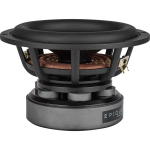
Of course for a normal Woofer not being marketed as a sub.
Dayton also has normal cast frames equal to the scan speak.
The motor is more powerful regardless, and sensitivity
is 87 dB not 83 dB like scan speak.
...oh yeah it is 100 dollars less. not more.
Basically all across the board, any Dayton driver beats scan speak with
somewhat equal comparison
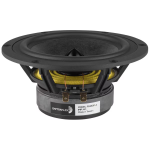
Of course a sub in the 10" range for only 10$ more than Scan speak 7"
also has a much much more powerful magnet. 87 dB not 83 dB
Fs is 25 Hz and xmax 12mm not 7mm.
I guess that is just not " fair" to compare money to speaker size.
But will basically show you what 10 dollars more does.
Just ignore those huge magnets scan speak, and vented spider.
All that extra casting material. We wont wonder where our money
is going. But but but its " Symmetrical"
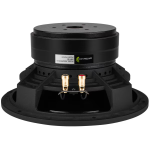
Nothing new.
Of course Dayton has a higher performer for 50 dollars less.
For lower sensitivity subs in the 83 dB range
It has 14mm Xmax compared to 7mm Scan speak.
cost less.
It actually uses a more advanced gap or gaps to do it

Of course for a normal Woofer not being marketed as a sub.
Dayton also has normal cast frames equal to the scan speak.
The motor is more powerful regardless, and sensitivity
is 87 dB not 83 dB like scan speak.
...oh yeah it is 100 dollars less. not more.
Basically all across the board, any Dayton driver beats scan speak with
somewhat equal comparison

Of course a sub in the 10" range for only 10$ more than Scan speak 7"
also has a much much more powerful magnet. 87 dB not 83 dB
Fs is 25 Hz and xmax 12mm not 7mm.
I guess that is just not " fair" to compare money to speaker size.
But will basically show you what 10 dollars more does.
Just ignore those huge magnets scan speak, and vented spider.
All that extra casting material. We wont wonder where our money
is going. But but but its " Symmetrical"

Last edited:
I don't know really which Scan-Speak driver you are referring to at 83db, 7" midwoofer.Scan Speak is just using copper caps, copper / aluminum rings in the gap
Nothing new.
Of course Dayton has a higher performer for 50 dollars less.
For lower sensitivity subs in the 83 dB range
It has 14mm Xmax compared to 7mm Scan speak.
cost less.
It actually uses a more advanced gap or gaps to do it
Of course for a normal Woofer not being marketed as a sub.
Dayton also has normal cast frames equal to the scan speak.
The motor is more powerful regardless, and sensitivity
is 87 dB not 83 dB like scan speak.
...oh yeah it is 100 dollars less. not more.
Basically all across the board, any Dayton driver beats scan speak with
somewhat equal comparison.
First off we are in 2025, not 1991 when the SD-1 etc. came around after the orig pat. expired.
Hopefully there would be way more effective and advanced motor structures today, and there is way better engineered motors then any of the mentioned ones.
Solutions and patents for the 'ideal' motorstructure when it comes to handling Eddy currents already exist many of.
And as far as i know there is just one mfg. that actually uses a FE magnet for very good reasons.
That would be Purifi, with a FE magnet yet there is still a small NDfeb slug in the polepiece. They're design is excellent in many ways.
There are also many different FE magnet materials with very different magnetic permeability characteristics.
While Ndfeb, Alnico, and SmCO are very different in that regard. Again there is a reason it is mentioned.
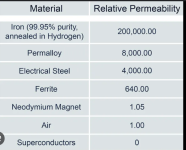
Scanspeak is still assembling every single driver in Denmark.
The price for a hour of labour in Denmark ? 30€+
Denmark is the only EU country left with a functioning and thriving economy, largely based on manufacturing.
Go look at the value of they're currency against anything else European.
What happens when a driver fails the QC? it gets either remade or scrapped.
Here the main expense is costs of labor, and government taxation.
Also they're SD-3 is quite different from the rest, that would be the high excursion. underhung Ndfeb magnets, it's a expensive design to make.
As else Scanspeaks will have better behaved response curves, less pronounced breakups to deal with in bandwidth, and a cleaner decay then said Dayton midwoofers in general. But there are deviations to that on both sides.
The price of labor in China? 1-2$ a hour.
Which is why you Americans sold out all your manufacturing and production capabilities in the 90's, and made the US what it is today.
What happens when a driver fails QC?
It either passes through or is rebadged for sale on Aliexpress. The only loss is in worst case deducted sales value.
Now when and why did aluminium Demodulation rings and Copper caps, sleeves etc. Become a thing and appear regularly?
After the Alnico supply got busted and all the manufacturers changed over to Ferrite magnets.
This is not without reason.
Here is a old quote from the designer of Scans SD-motors, for a hint.
Modulation of the magnetic field:
This is a neglected area. In the 50's they philosophized a great deal over why the voice coil was displaced in the magnetic field under conditions of strong drive, among other things Cunningham defined the "solenoid effect". If one takes the trouble to measure the force from the voice coil inwards and outwards respectively, at say an applied coil current of five amps, one will realize that there is a large difference. The coil pushes harder outwards than it pulls inwards. Somewhat dependent on the design, this difference will be on the order of 5-50% (!), causing both offset and compression. I have, just to tease, done calculations on three different magnet systems; my old Scanspeak system with 18 mm coil, 100 windings and a 120 mm ferrite magnet, but without SD (Symmetric Drive). Then an imagined system with a 40mmx40mm alnico magnet, and one system with a 40x10 neodymium magnet. These three systems have roughly the same magnetic field, statically speaking. The ferrite system has an asymmetry of 25%, the alnico system has 4% and the neodymium system at about 2% ! Mysterious? Not at all! If we picture the voice coil, 18 mm long, 100 turns, at 5 amps, this produces 500 amp-turns, or a field strength of 28000 A/m, this is a magnet "let loose" around the air gap. It is directed with or in opposition to the main field, depending on the direction of the current, and acts directly upon the field in the air gap, and also shifts the operating point of the magnet. The ferrite magnet's operating point is at about 2500 gauss, and has an incline such that it can easily be shifted 2-300 gauss, that's quite a few per cent! Both the alnico magnet and the neodymium magnet have operating points up around 10-11000 gauss, and an incline which makes them somewhat "stiffer", meaning that they can't be moved much. Both neodymium and alnico have the property of having a permeability close to 1, in other words the same as air, and they do not affect the inductivity of the voice coil! Then we can go back to the early 70's, when JBL spoke of "The Alnico Sound" - that was no lie!
As for the top of the line' epique, which is a "fullrange subwoofer", ending up at under 80db sensitivity used as a speaker, which is the cost of the high bandwidth. Yes it has a copper sleeve, the inductance is somewaht controlled but far from ideal. and the Klippel results are good in terms of Bl(x), the rest is not super impressive. The cone has some nice features though and the decay is unusually clean.
From the construction closeup there are a few areas that looks.. there is a total of 6 differentiating gap diameters in one.
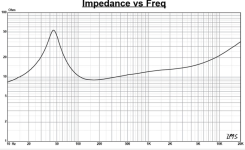
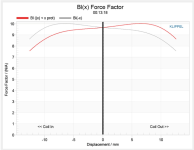
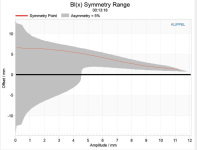

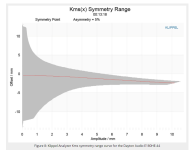
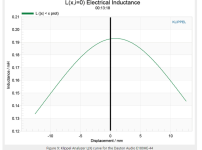
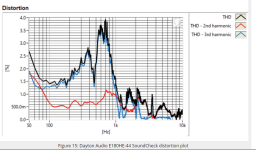
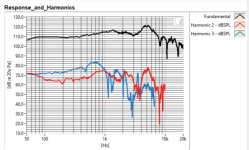
Here is a exert from another manufacturers whitepaper" showing the result of testing different solutions to deal with the issue.
My point is simply that the features marketed is just that marketing, it does not tell one a whole lot of the actual resulting product.
There are a good deal of drivers with demodulation and copper caps etc. that does not even mention it in they're marketing.
Just some info on the subject added along.
Attachments
-
Tesi_Lorenzo_Bortot_-_1014762 (1) SHoting rings.pdf9.2 MB · Views: 0
-
A_Closer_Look _at_L_etc.pdf867.3 KB · Views: 1
-
000946.pdf3.9 MB · Views: 1
-
FaradayRingsVoiceCoilImpedance.pdf457.1 KB · Views: 0
-
vcinduc.pdf635.5 KB · Views: 1
-
Voice_Coil_ Impedance_04.pdf626.9 KB · Views: 0
-
Loudspeaker Nonlinearities_Causes,Parameters,Symptoms_06.pdf1.4 MB · Views: 2
Last edited:
And by the way.
I am not trashing Dayton Audio's products in any way.
But the value/price ratio of Dayton products in the USA, is a lot better then the rest of the world.
After all the US only accounts for like 350 mill out of 8? Billion people.
So that is not the general reality for most, something to keep in mind.
While you pay higher prices in the US for European brands etc.
For example i'm a fan of some of the RSS series for closed subs, they do very well for the cost and size.
I am not trashing Dayton Audio's products in any way.
But the value/price ratio of Dayton products in the USA, is a lot better then the rest of the world.
After all the US only accounts for like 350 mill out of 8? Billion people.
So that is not the general reality for most, something to keep in mind.
While you pay higher prices in the US for European brands etc.
For example i'm a fan of some of the RSS series for closed subs, they do very well for the cost and size.
Also Aurasound neo radial technology, NRT, needs discussion too, it has neodymium magnets next to the coil on both sides, many problems being discussed about FE and Alnico would simply not be there with NRT.
Warm Regards,
WonderfulAudio
Warm Regards,
WonderfulAudio
- Home
- Loudspeakers
- Multi-Way
- What are "Symmetrical Drive" woofers?